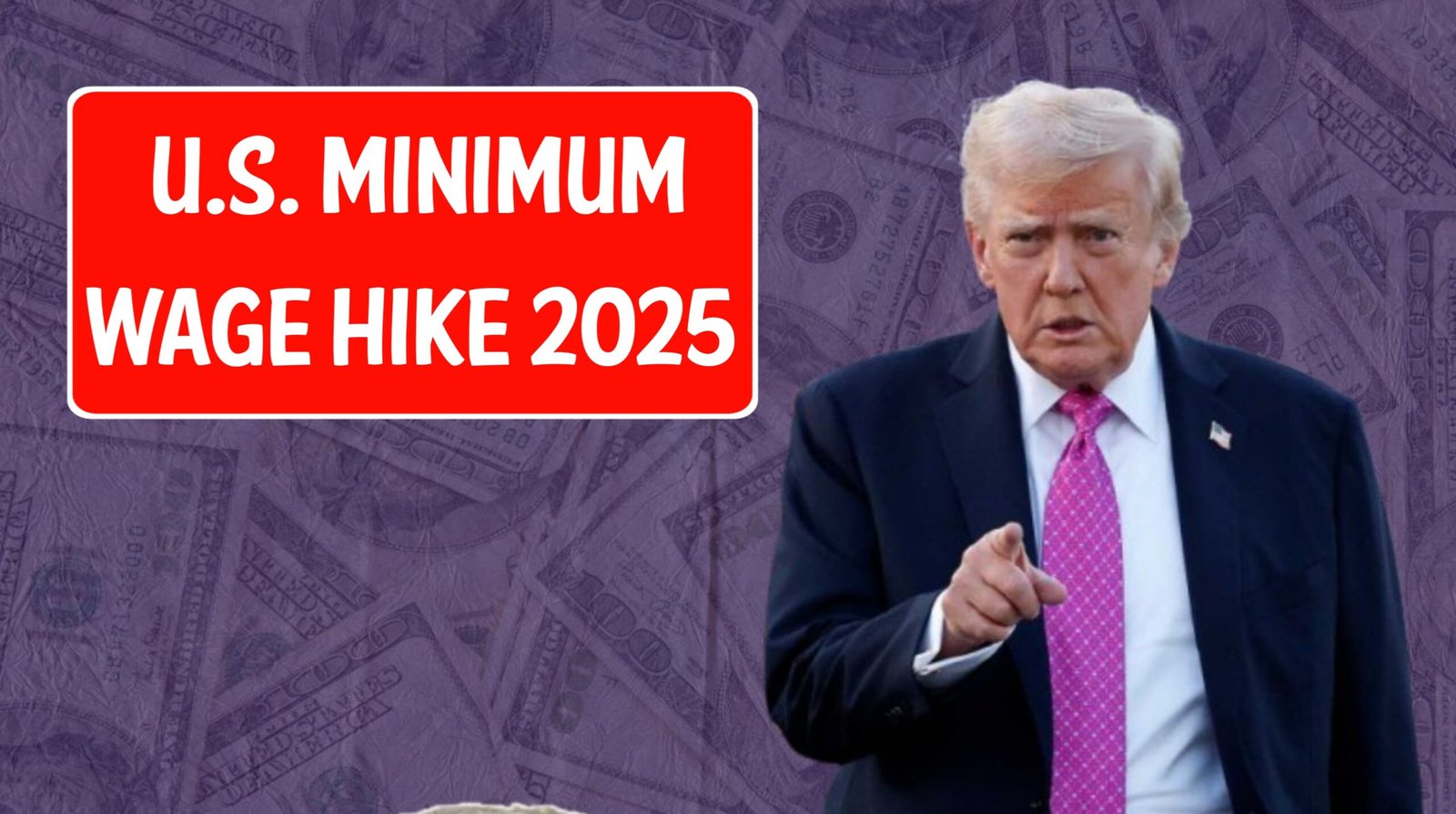The United States is set to witness a major shift in wage standards as the federal minimum wage sees an increase from 8th October 2025. Millions of workers across various industries will experience higher hourly pay, marking a significant milestone in the ongoing efforts to improve living standards for low-income workers.
This update affects hourly employees in both public and private sectors and could have wider implications on employment trends, business expenses, and the overall economy. Below, we break down the new rates, state-level variations, and what workers and employers need to know.
Federal Minimum Wage Increase
Effective 8th October 2025, the federal minimum wage will rise from $7.25 per hour to $10 per hour. This adjustment represents a major boost for workers who have seen their wages stagnate for years. The increase aligns with federal initiatives aimed at reducing income inequality and supporting the growing cost of living across the country.
While this hike is mandatory at the federal level, individual states and cities often set their own minimum wages, which may be higher than the federal rate.
State-by-State Variations
Several states have already implemented higher minimum wages than the federal standard. With the new federal rate coming into effect, states with lower rates will need to adjust their pay scales accordingly.
- California: $16 per hour
- New York: $15.50 per hour (varies by region)
- Florida: $12 per hour
- Texas: $10 per hour (matches federal minimum)
These differences mean that while the federal rate sets a baseline, employees in many regions will continue to receive higher pay depending on local regulations.
Impact on Workers
Workers earning the minimum wage will see a significant increase in their monthly earnings. For example, someone working full-time at 40 hours per week will see their annual income rise from $15,080 to $20,800. This extra income can make a meaningful difference in covering basic living expenses such as rent, groceries, and healthcare.
In addition, higher wages can reduce reliance on government assistance programs and stimulate consumer spending, as low-income workers typically spend additional earnings immediately on goods and services.
Effects on Employers
For businesses, this wage hike comes with both opportunities and challenges.
- Increased labor costs: Small businesses may need to revise budgets to accommodate higher payroll expenses.
- Employee retention: Higher wages can improve staff morale and reduce turnover, which can save costs associated with hiring and training.
- Pricing adjustments: Some businesses might raise prices to offset increased labor costs.
Employers are advised to plan ahead and adjust their financial strategies to ensure compliance with the new federal regulations.
Minimum Wage and Inflation
One of the driving forces behind this increase is inflation. Over the past few years, rising prices for housing, food, and other essentials have outpaced stagnant wages. The federal minimum wage hike aims to partially bridge this gap, providing workers with more purchasing power and helping stabilize the economy.
Economic experts note that while this increase may not fully offset inflation, it is a crucial step toward ensuring fair compensation for low-wage workers.
Impact on Young and Part-Time Workers
Many minimum wage earners are young adults, students, or part-time employees. The wage increase will have a positive impact on this demographic, offering a greater incentive to work and potentially easing financial pressures.
Some employers may respond by adjusting hours or staffing to manage costs, but overall, the increase is expected to benefit millions of part-time and entry-level workers.
Regional Differences in Wage Enforcement
While the federal minimum wage is a baseline, local governments have varying enforcement mechanisms. Some cities, such as Seattle and San Francisco, have their own higher minimum wages, which means that workers there will not see changes since they already earn above the federal level.
In contrast, states with previously low minimum wages, such as Mississippi and Georgia, will now see their workers earning more than before, aligning with federal standards.
Tips for Workers
Workers should take proactive steps to ensure they receive the new minimum wage:
- Check pay stubs: Make sure your hourly rate reflects the increase starting 8th October 2025.
- Know your rights: Federal and state labor departments provide resources for wage compliance.
- Communicate with employers: Discuss any discrepancies in pay before seeking formal remedies.
Awareness and proactive action can help workers fully benefit from the new wage rules.
Employer Preparation
Employers should also act to comply with the updated minimum wage:
- Update payroll systems: Ensure automated payroll systems reflect the new rate.
- Revise contracts: Adjust employment contracts or agreements if needed.
- Budget planning: Consider how the wage increase affects operational costs and pricing strategies.
Failure to comply can result in penalties, so early preparation is key.
Economic Implications
The minimum wage hike is likely to have ripple effects across the economy. Higher wages can lead to increased consumer spending, benefiting retail, hospitality, and service sectors. On the other hand, some businesses may face higher costs, potentially affecting employment patterns.
Economists anticipate that the positive impact on consumer demand could outweigh the challenges posed to businesses, creating a net benefit for the overall economy.
Future Wage Trends
The 2025 federal minimum wage increase reflects a broader trend of wage growth in the U.S., as policymakers seek to address income inequality and ensure a living wage. Analysts predict that additional incremental increases could follow in the coming years, depending on economic conditions and political priorities.
Workers and employers alike are advised to monitor policy developments and plan accordingly.
Conclusion
The U.S. federal minimum wage hike effective 8th October 2025 marks a significant step forward for low-wage workers. With a new baseline of $10 per hour, millions of Americans will benefit from higher earnings and greater financial security.
While challenges remain for businesses adjusting to higher labor costs, the overall economic impact is expected to be positive, with increased consumer spending and improved worker satisfaction.
Staying informed, proactive, and compliant will ensure that both workers and employers make the most of these changes.
